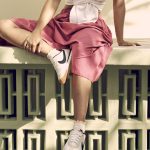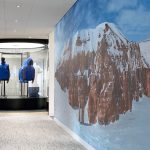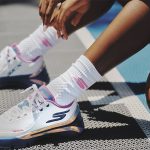Quiksilver Inc. managed to show a small profit in its fiscal third quarter ended July 31, thanks to cost cutting efforts. But the company surprised Wall Street by forecasting a loss in the fourth quarter due to weakening sales and higher interest costs. On a conference call with analysts, Bob McKnight, chairman, CEO and president, said that although the third quarter met expectations, the environment remains “very challenging.”
“The young men’s business is meeting retailers reduced expectations, and our business in that segment appears to be stabilizing,” said McKnight. “However, there is a clear trend towards price pointed fast fashion, and the juniors market is affected to a greater degree than other segments, posing a particular challenge to our Roxy business.” He said that footwear sales, which until recently were trending better than apparel, have softened, and retailers are attempting to buy very conservatively.
Quiksilver now expects a loss per share in Q409 in the mid-single-digit range. Also impacting the bottom line will be higher interest expense associated with its new financing and an unusual tax provision. Q409 revenues are expected to be down in the mid-teens on a percentage basis.
Third quarter earnings slid to $1.3 million, or 1 cent a share, from $2.9 million, or 2 cents, in the year-ago period. Consolidated pro forma income from continuing operations was $3.7 million, or 3 cents a share, in the latest quarter compared to $33.1 million, or 25 cents, a year ago. Net revenues and income from continuing operations for all periods exclude the results of the Rossignol wintersports business, which was sold in its fiscal first quarter. Pro forma net income also excludes severance- and facility-related restructuring charges of $7.3 million after-tax and an offsetting tax adjustment.
Third quarter revenues dropped 11.2% to $501.4 million but were off 5% in constant currencies.
By region, revenues in the Americas decreased 6% to $256.8 million with contraction in both the wholesale and retail distribution. The Americas region also saw a mix shift towards off-price product versus the prior year. Comps at Quiksilver’s U.S. owned-retail stores were down around 20%. While the retail business is profitable around the world, it remains unprofitable in the U.S. A net of 25 stores will be closed to restore the businesses' profitability, with around 8 to 9 closing in the current year.
European segment sales were down 19% to $189.0 million. In constant currencies, European revenues were off 8%. Comps were down in the high-single digits. The region continues to be the company's highest performing business as it delivered 13% operating profit in the quarter.
Asia/Pacific revenues decreased 8% to $55.1 million. In constant currencies in Australian dollars, Asia/Pacific sales increased 12% largely due to the effect of the yen on the regional consolidation of its Japanese business.
Regarding individual brand performance, McKnight said the Quiksilver young men’s business has been more consistent than its juniors business with “great sell-throughs in some of the new technical performance products,” such as Diamond Dobby boardshorts and CoolMax denim.
At Roxy, changes are being made in product development and the whole brand is broadening its target age to include a slightly older customer. McKnight noted that a segment of Roxy's customers is now older with different tastes.
The entire juniors design group was moved back under the leadership of Summer Rapp, who has recently been responsible for the Quiksilver women’s line. SKUs are being dramatically reduced with a focus around key fashion items.
McKnight said that for both its young men’s and juniors businesses, ZQK continues to implement a plan to save between $40 million and $60 million through cost reduction and gross margin initiatives. With new financing leading the company to commit to keeping the DC Shoes brand instead of exploring a sale, similar savings are now being implemented for DC Shoes.
Joe Scirocco, Quiksilver's CFO, nonetheless, attributed DC Shoe's recent softening to a shift towards canvas vulcanized shoes versus the tough sole/leather uppers that the core skate brands had traditionally worn. Larger stores are also delaying shipments that traditionally occurred in the fourth quarter. Scirocco noted that DC Shoe's business in Europe is still running up double-digits.
The 370 basis point decline in gross margin was primarily driven by pricing pressure in the Americas region, although each region experienced some margin erosion. Mall-based sores, particularly department stores and national chains, are seeing more margin pressures than independents.














